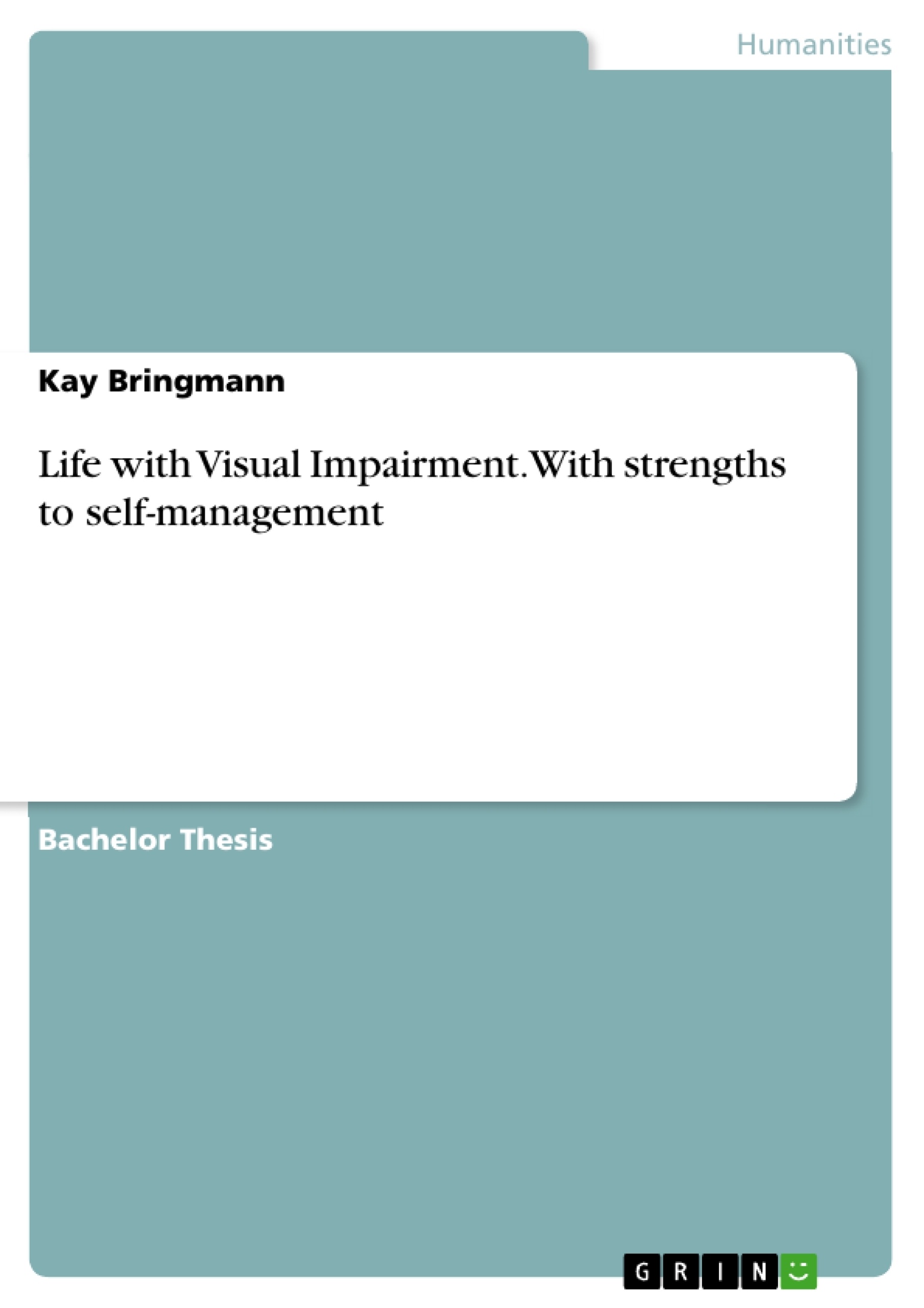The current study investigated the role that strengths play in self-management and offered an in-depth insight into which strengths supported individuals with visual impairments in their self-management. While some strengths aided the participants in their self-management strategies, others were beneficial to the participants independent of these strategies they employed.
Visual impairments are wide spread around the globe. It is estimated that around 2,2 billion people are visually impaired. Such impairments often negatively impact the well-being and quality of life of those affected. To better face the many challenges imposed upon them by their impairments, many individuals with visual impairments employ self- management. To support this self-management, individuals with visual impairments can make use of their strengths and more specifically the strength-based approach. Here, the focus is laid upon strengths instead of limitations, enabling individuals suffering from visual impairments to grow and realize their full potential. Given its importance there is not enough research available about the strengths that individuals with visual impairments use to self- manage their lives. Therefore, the current study aims to identify which strengths are used by individuals with visual impairments to self-manage their lives.
Methods: A convenience sample was used to recruit 10 visually impaired participants that were needed for the current study. Semi-structured interviews were conducted to investigate the experiences these individuals have made with regards to their visual impairments and which strengths they thought helped them to self-manage their lives, Interviews were executed and audio-recorded via Skype, transcribed by the researcher, and finally coded following an inductive approach.
Results: After conducting the interviews, a total of 10 codes were found which were integrated into the main themes ‘internal strengths’, ‘external strengths’, and ‘self- management strategies’. The internal strengths of having self-confidence and humour were found to directly contribute to the self-management strategies ‘seeking help’ and ‘acceptance of the visual impairment’ respectively.
Inhaltsverzeichnis (Table of Contents)
- Abstract
- Introduction
- Methods
- Participants
- Procedure
- Interview
- Data analysis
- Results
- Internal strengths
- External strengths
- Self-management strategies
- Discussion
- Strengths and limitations
- Implications for further research
- Conclusion
- Acknowledgements
- References
Zielsetzung und Themenschwerpunkte (Objectives and Key Themes)
This study aims to explore which strengths individuals suffering from visual impairment use to self-manage their lives. The research question is: Which strengths do individuals suffering from visual impairment use to self-manage their lives?
- The role of internal strengths in self-management, such as resilience, independence, self-confidence, and humour.
- The importance of external strengths, including a supportive social environment and tools/aids.
- Self-management strategies employed by individuals with visual impairments, such as seeking help, acceptance of the visual impairment, downward comparison, and the use of other senses.
- The relationship between strengths and self-management strategies.
- The implications of these findings for supporting individuals with visual impairments in self-managing their lives.
Zusammenfassung der Kapitel (Chapter Summaries)
Introduction
This chapter introduces the prevalence of visual impairment worldwide and its negative impact on well-being and quality of life. It highlights the importance of self-management for individuals with visual impairments to mitigate the consequences of their impairment. The chapter also emphasizes the gap in research regarding self-management strategies specifically for visually impaired individuals and the need for a strengths-based approach to support them.
Methods
This chapter outlines the qualitative research design employed in the study. It describes the participant recruitment process, interview procedure, and data analysis methods. The chapter details the ethical considerations and the steps taken to ensure participant anonymity and data integrity.
Results
This chapter presents the findings of the study, highlighting the key themes that emerged from the interviews. It explores the internal strengths, such as resilience, independence, self-confidence, and humour, reported by participants. It also examines the external strengths, including a supportive social environment and the use of tools/aids. Finally, the chapter analyzes the self-management strategies employed by participants, including seeking help, acceptance of the visual impairment, downward comparison, and the use of other senses.
Schlüsselwörter (Keywords)
The main keywords and focus topics of the text include visual impairment, self-management, strengths, internal strengths, external strengths, social environment, tools/aids, self-management strategies, seeking help, acceptance of the visual impairment, downward comparison, and use of other senses.
- Quote paper
- Kay Bringmann (Author), 2020, Life with Visual Impairment. With strengths to self-management, Munich, GRIN Verlag, https://www.grin.com/document/938553




